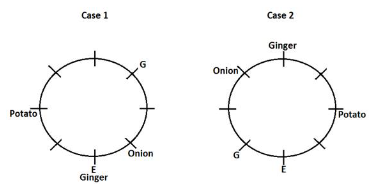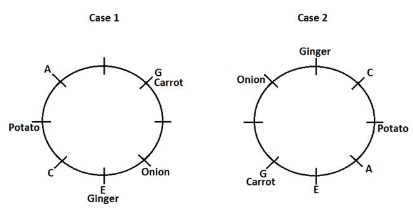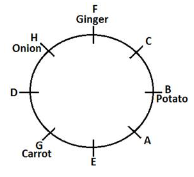Solutions
1) One people sits between E and the one who likes Potato.
Here, we have two possible cases i.e. Case 1 and Case 2.
2) G sits third to the right of the one who likes Potato.

3) One people sits between G and the one who likes Onion.
4) The one who likes Onion is not a neighbour of the one who likes Potato.
5) The one who likes Ginger sits to the immediate right of the one who likes Onion.

6) A sits opposite to the one who likes Onion and sits second to the left of the one who likes Carrot.
7) C sits to the immediate right of the one who likes Ginger.

8) C is the neighbour of B and F who is not a neighbour of A.
Here, Case 1 gets eliminated.
9) D doesn’t like any vegetable.
Here, we have the final arrangement:

Clearly, ‘D, F’ doesn’t belong to that group because all the other pairs are the neighbours.



 Get latest Exam Updates
Get latest Exam Updates 





 ×
×






